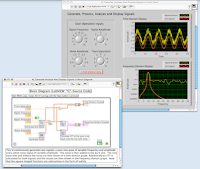
The Global Positioning System (GPS) is a burgeoning technology, which provides unequalled accuracy and flexibility of positioning for navigation, surveying and GIS data capture. The GPS NAVSTAR (Navigation Satellite timing and Ranging Global Positioning System) is a satellite-based navigation, timing and positioning system. The GPS provides continuous three-dimensional positioning 24 hrs a day throughout the world. The technology seems to be beneficiary to the GPS user community in terms of obtaining accurate data upto about100 meters for navigation, metre-level for mapping, and down to millimetre level for geodetic positioning. The GPS technology has tremendous amount of applications in GIS data collection, surveying, and mapping.
The GPS uses satellites and computers to compute positions anywhere on earth. The GPS is based on satellite ranging. That means the position on the earth is determined by measuring the distance from a group of satellites in space. The basic principle behind GPS are really simple, even though the system employs some of the most high-tech equipment ever developed.
Individuals may purchase GPS handsets that are readily available through commercial retailers. Equipped with these GPS receivers, users can accurately locate where they are and easily navigate to where they want to go, whether walking, driving, flying, or boating. GPS has become a mainstay of transportation systems worldwide, providing navigation for aviation, ground, and maritime operations. Disaster relief and emergency services depend upon GPS for location and timing capabilities in their life-saving missions. Everyday activities such as banking, mobile phone operations, and even the control of power grids, are facilitated by the accurate timing provided by GPS. Farmers, surveyors, geologists and countless others perform their work more efficiently, safely, economically, and accurately using the free and open GPS signals.
The GPS is made up of three parts: satellites orbiting the Earth; control and monitoring stations on Earth; and the GPS receivers owned by users. GPS satellites broadcast signals from space that are picked up and identified by GPS receivers. Each GPS receiver then provides three-dimensional location (latitude, longitude, and altitude) plus the time.
The space segment (satellites orbiting the Earth) comprises the orbiting GPS satellites, or Space Vehicles (SV) in GPS parlance. The GPS design originally called for 24 SVs, 8 each in three circular orbital planes,but this was modified to 6 planes with 4 satellites each.The orbital planes are centered on the Earth, not rotating with respect to the distant stars.The six planes have approximately 55° inclination (tilt relative to Earth's equator) and are separated by 60° right ascension of the ascending node (angle along the equator from a reference point to the orbit's intersection).The orbits are arranged so that at least six satellites are always within line of sight from almost everywhere on Earth's surface.
The user's GPS receiver is the user segment (US) of the GPS system. In general, GPS receivers are composed of an antenna, tuned to the frequencies transmitted by the satellites, receiver-processors, and a highly-stable clock (often a crystal oscillator). They may also include a display for providing location and speed information to the user. A receiver is often described by its number of channels: this signifies how many satellites it can monitor simultaneously. Originally limited to four or five, this has progressively increased over the years so that, as of 2006, receivers typically have between twelve and twenty channels.






